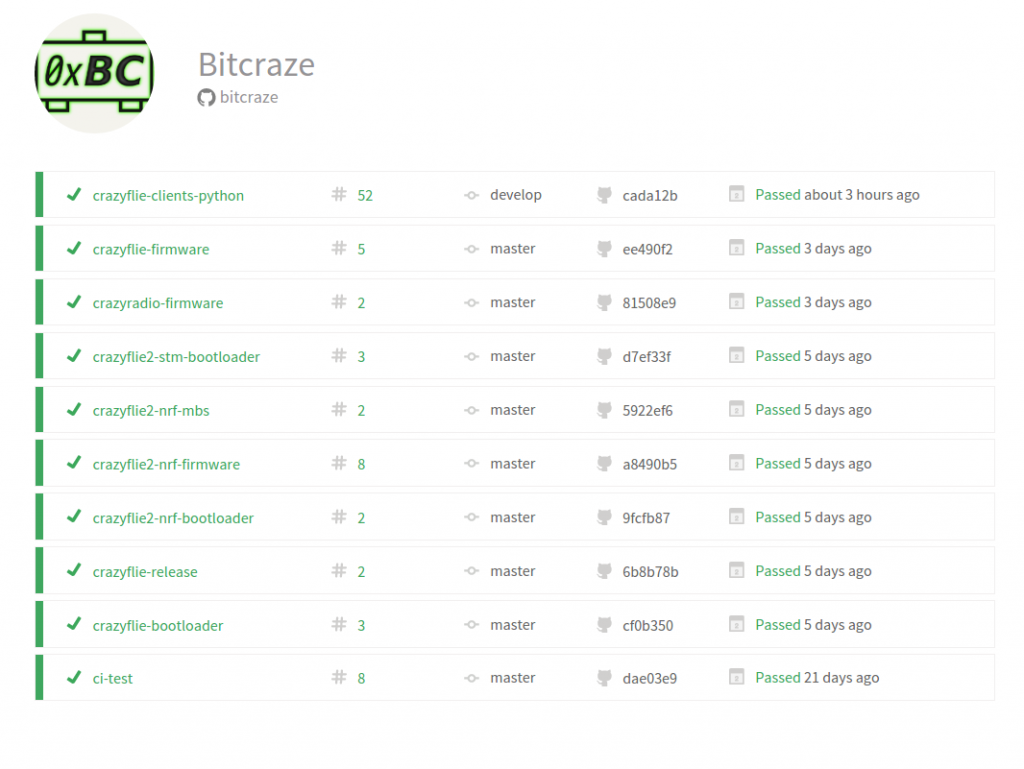While it is a central part of a quadcopter the core of the Crazyflie 2.0 had not moved since we released it. We deemed it to be good enough, it was flying and going fast after all.
Recently TheSeanKelly from the community did not hear it that way and started investigating the flight performance starting by the attitude control PID. The results so far are impressive!
Sean tuned the rate loop a lot, this is the loop responsible to control the angular rate of the Crazyflie in roll and pitch. Doing that and the attitude loop could be tweaked which we did a bit, the one responsible to control the absolute orientation of the copter. And the results is that two major issues with the flight performance seems to be greatly improved:
- The take-off behavior: Crazyflie is currently not taking-off straight by itself. With the new settings this is fixed and at any thrust Crazyflie just goes straight up.
- Attitude control: We had a lot of overshot in the attitude control. Basically it means that if you go forward 10 degrees and request 0 degree (level) the Crazyflie will overshoot with a negative angle causing it to stop. With the new tighter control if you ask +10degrees pitch the crazyflie accelerates and if you ask 0 it just stop accelerating. It will then continue at nearly constant speed. This is the “correct” behavior. This also means that the Crazyflie now reacts much more precisely and quickly to joystick controls.
We have tried to make a short video to show the new performance. Though the attitude control is really hard to show. We installed a test pilot on our Crazyflie that shows how much the new parameters helps in overall stability (I have tried to steer with old parameters as hard as I was steering with the new one). We also show more stability in pretty windy condition.
These new parameter have been pushed protected by an experimental flag. After more testing the official firmware will have much better flight performance out of the box :-).










